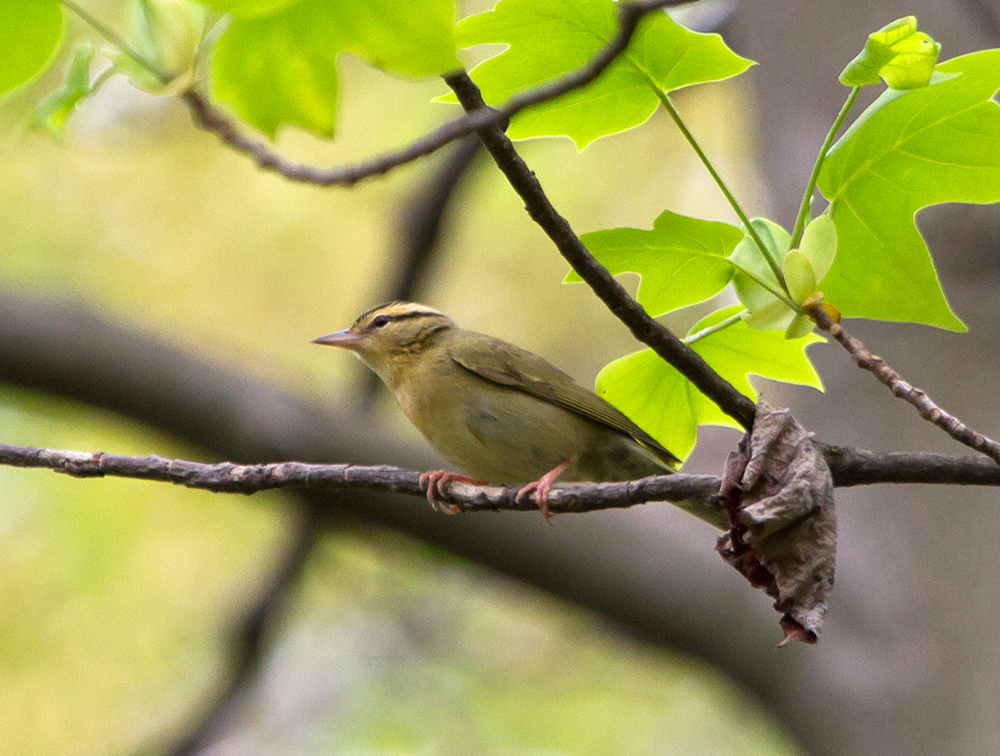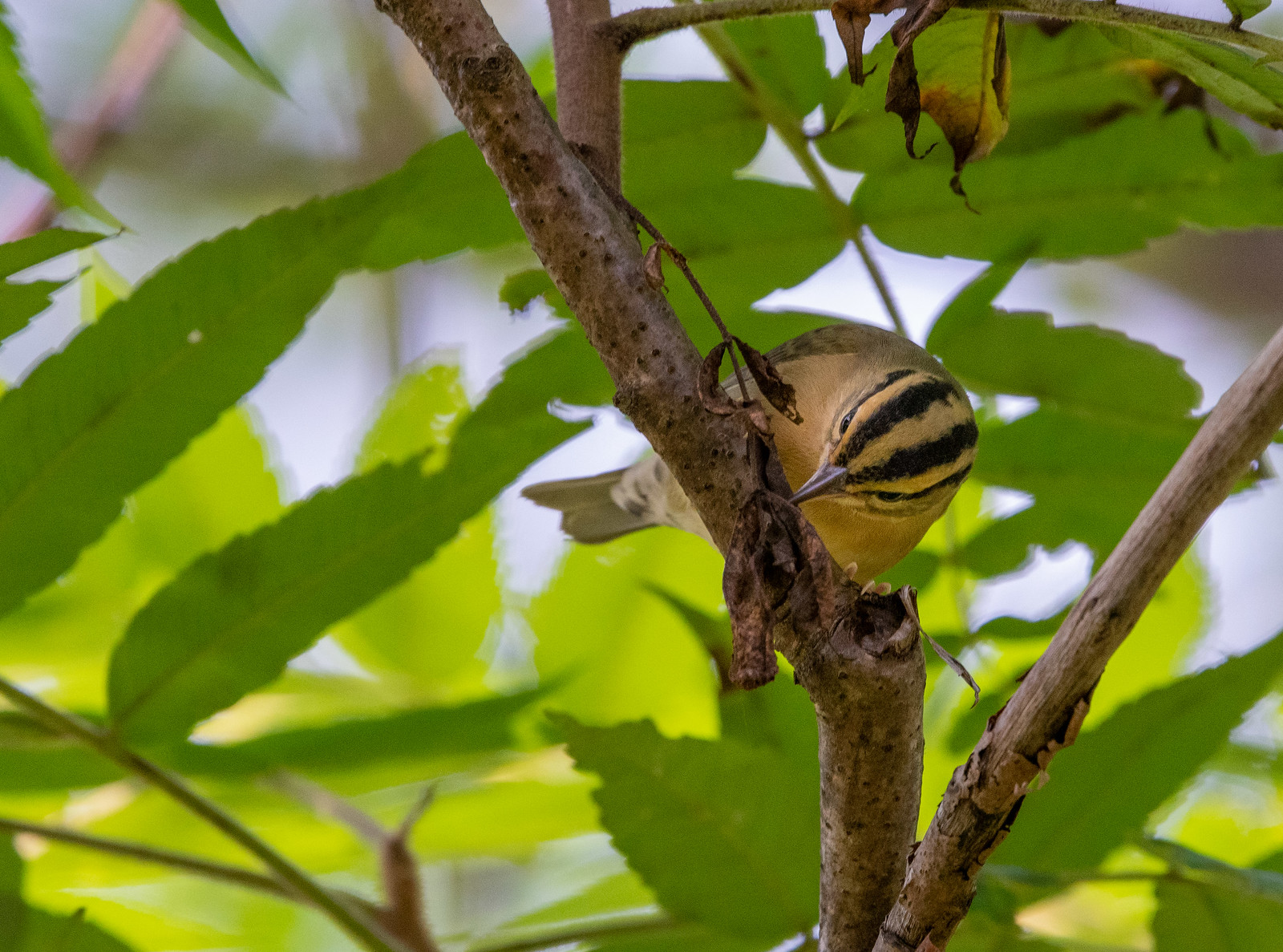| Early Spring Date: | April 17 |
| Late Spring Date: | May 24 |
| Best Dates to See in Spring: | April 26 - May 9 |
Spring: Worm-eating Warblers are regular visitors to Monticello Park, but never in significant numbers. They usually pass through early, and the most likely time to find one is around the end of April and the first week in May. Worm-eating Warblers nest in the Washington metro area, but not at Monticello. Their preferred nesting habitat is deciduous and mixed woodlands, often near water.
Fall: An average of only one or two Worm-eating Warblers pass through Monticello each fall.
Where to See Them in the Park
Worm-eating Warblers forage in the mid-story and understory. They sometimes go into the stream for a quick bath or drink. You are more likely to hear one than to see one.
Physical Description

Worm-eating Warblers are mostly olive with a buffy head. The best fieldmarks are the broad black stripes on the head. Males and females of all ages have similar plumage.


Worm-eating Warblers have a longish bill that is dark on top and pale underneath.
Vocalizations
The song of the Worm-eating Warbler is a dry, insect-like trill.
Hear the song of the Worm-eating Warbler.
Notes

Worm-eating Warblers are dead-custer feeders. They often forage for food in hanging clusters of dead foliage. They do not eat earthworms. Their name comes from their fondness for the caterpillars of butterflies and moths. A lot of other warbler and songbird species are worm-eating in the same sense. The widespread use of pesticides to kill various types of caterpillars could have serious long-term consequences for these species.
Origin of Names
Common Names: Worm-eating is a translation of the scientific species name. The New World Warblers were named for their similar appearance to European warblers, to whom they are not related. Most of the New World warblers do not warble (sing continuously with notes that change frequently).
Genus Name: Helmitheros means worm hunter.
Species Name: Vermivorum means worm eating.
Worm-eating Warbler video footage
Return to the Index
